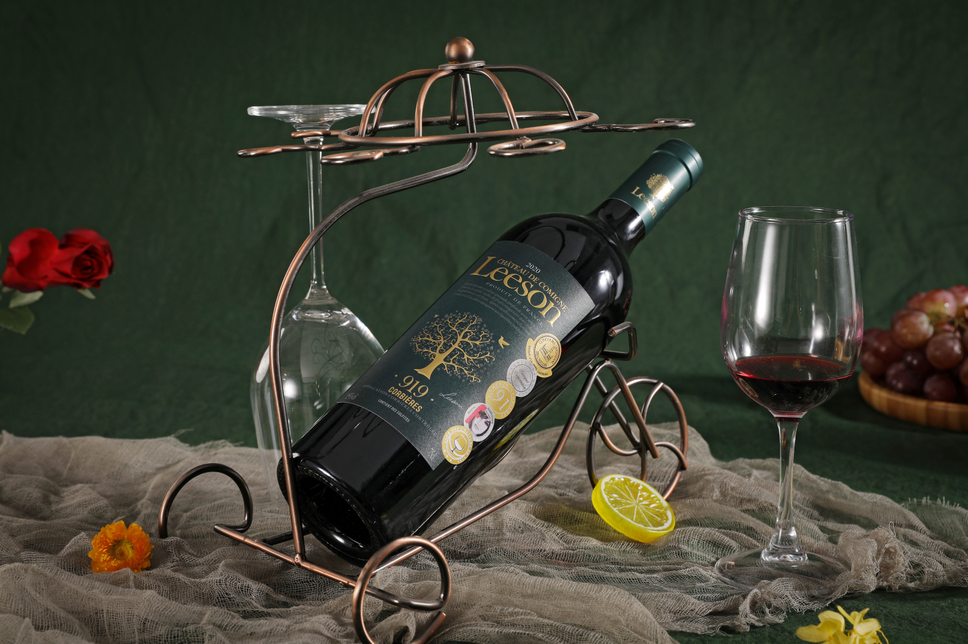When drinking wine alone, there is a romantic saying, just like every drop of wine cannot return to the original grape, neither can we return to our youth. Indeed, every drop of delicious wine begins with a single grape. Each bunch of grapes has completed its mission as wine grapes from ripening to wine.
Yuncang winery brand LEESON red wine sharing So, from the first step of picking grapes, what are the steps to turn into wine?
The operation core of Yuncang Winery: Yuncang wines are shipped in one piece, with mature logistics and warehousing, centralized procurement reduces transportation costs, allows consumers to enjoy benefits, wins by quantity, and truly achieves high quality and low price.
Wine making mainly includes picking and selecting materials, removing stems and breaking the skins, fermenting and filtering, soaking and stirring the skins, and finally bottling and preserving.
1. Picking materials. Generally speaking, whether the wine is of high quality requires hard work in picking. There are many precautions, such as not to let the fresh grapes be crushed and damaged, and to use small baskets for picking and transportation. The process of material selection is also the process of removing branches and leaves, immature grapes and rotten grapes.
2. Squeeze and break the skin. The selected high-quality grapes are sent into the pressing machine. According to different types of grapes, the degree of branch removal can be adjusted appropriately according to the needs during the pressing process.
3. Fermentation and filtration. After pressing and destemming, the grapes enter the fermentation tanks with their skins, usually stainless steel tanks, but also concrete tanks or oak barrels. At this time, the alcohol content rises and the sugar content drops. The winemaker can adjust the temperature to speed up or slow down the fermentation process.
4. Soak skin and stir. The fermentation process is not to cover the lid and leave it alone, but to observe the grape juice at any time . If you find that the grape stems and grape skins are floating due to carbon dioxide, you need to stir the grape juice to prevent the grape juice from overflowing. Get more beneficial substances from grape skins. Fruit acid or lactic acid can also be added for secondary fermentation to increase the flavor of the wine and soften the taste.
5. Filter. After the wine has been fermented, it is necessary to remove the solid part left after fermentation, pour the grape juice into a filter, and add filter clarification substances such as gelatin, clay or egg white.
6. Deployment. This is not a necessary step, as single wines can be bottled without blending, and blended wines can be blended with other wines before being bottled .
7. Save. The preservation of wine is also a very important step. It should not only prevent the wine from spoiling, but also allow malolactic acid to continue to ferment to produce aging value.

Yuncang winery brand LEESON red wine sharing Therefore, there is a set of strict procedures for a bottle of wine to be labeled and launched. If any procedure is not grasped properly, it will affect the quality of the finished wine. Because of the strict production, people have a fondness for wine.
The operation core of Yuncang Winery: Yuncang wines are shipped in one piece, with mature logistics and warehousing, centralized procurement reduces transportation costs, allows consumers to enjoy benefits, wins by quantity, and truly achieves high quality and low price.

What is fortified Muscat wine?
Muscat grapes are a variety of...(713 )PEOPLE READINGTime:2023-03-01
How to taste the "afterta
Yuncang winery brand LEESON re...(756 )PEOPLE READINGTime:2023-03-01
How to Mobilize All Senses to
Yuncang winery brand LEESON re...(709 )PEOPLE READINGTime:2023-03-01
Do you know the lifespan of wi
People who like to drink wine ...(536 )PEOPLE READINGTime:2023-03-01